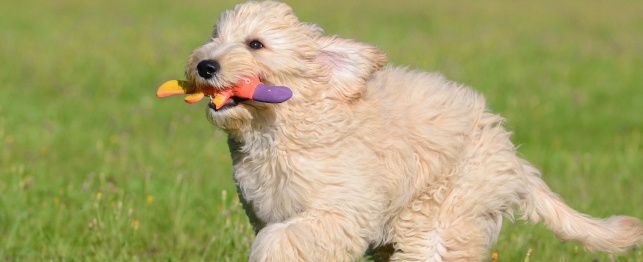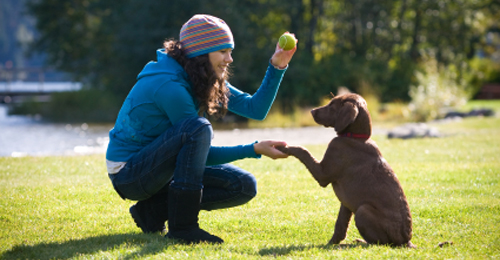You must remember that patience is your biggest virtue when dog training. Reprimanding or punishing your dog for wrong behaviour is completely counter productive. By simply ignoring your dog you will send him a clear enough message that he should not repeat that particular behaviour. Your dog might do the wrong thing several times but patience and persistence will win through in the end. Your dog wants nothing more than to please you and this is how you are able to train him to do your bidding.
Dog training should be fun for both trainer and dog and should never be boring for either of you. Consequently it is better to limit any training session to about 15 minutes a day particularly for young dogs. Initially you should use a quiet area of your home or garden and start with basic commands like heel, sit, stay and come. Ignore incorrect behaviour but immediately praise the right behaviour. Reinforce the praise with a small treat. You don't want to make your dog fat so small treat is important. Persevere with these four commands, move on only when your dog obeys every time
As your dog begins to master these commands you should continue to praise him instantly but delay the giving of a treat. As time passes he will execute the command with no treat at all You should also go to busier and louder places where the dog's attention will be compromised and make obeying more demanding.
Many owners go wrong in interpreting 'instant positive reinforcement'. In doggy terms 'instant' has got to be inside 2 seconds. Any longer and your dog will fail to connect the action with the reinforcement. Your dog will be easily confused if you are a bit slow with the praise. For instance, suppose your are teaching your dog to sit. An untrained dog when first learning the 'Sit' command will will sometimes sit and then stand almost immediately afterwards. If you are at all slow with the praise then you could cause your dog to associate the 'Sit' command with a 'stand' action. So beware!
Do not move on to any additional commands until your dog has completely mastered the four basic ones in all situations.
A last thought - you have to be consistent. If there is more than one person involved in the training then to avoid confusing the dog they have to agree on a general approach.

 Dog Dudes: Surfing Dogs
Dog Dudes: Surfing Dogs
Dog Dudes: Surfing Dogs
Dog Dudes: Surfing Dogs
 Stop Dog Digging: Find Fun And Easy Ways To Train Your Dog
A lot of people are trying to maintain a clean home these
Stop Dog Digging: Find Fun And Easy Ways To Train Your Dog
A lot of people are trying to maintain a clean home these
 Five Games That Will Delight Your Dog
Five Games That Will Delight Your Dog
Five Games That Will Delight Your Dog
Five Games That Will Delight Your Dog
 Teddy Bear Dog
Due for this, the actual who invests in professional canine
Teddy Bear Dog
Due for this, the actual who invests in professional canine
 Fun at the Park for You and Your Dog
Fun at the Park for You and Your Dog
Fun at the Park for You and Your Dog
Fun at the Park for You and Your Dog